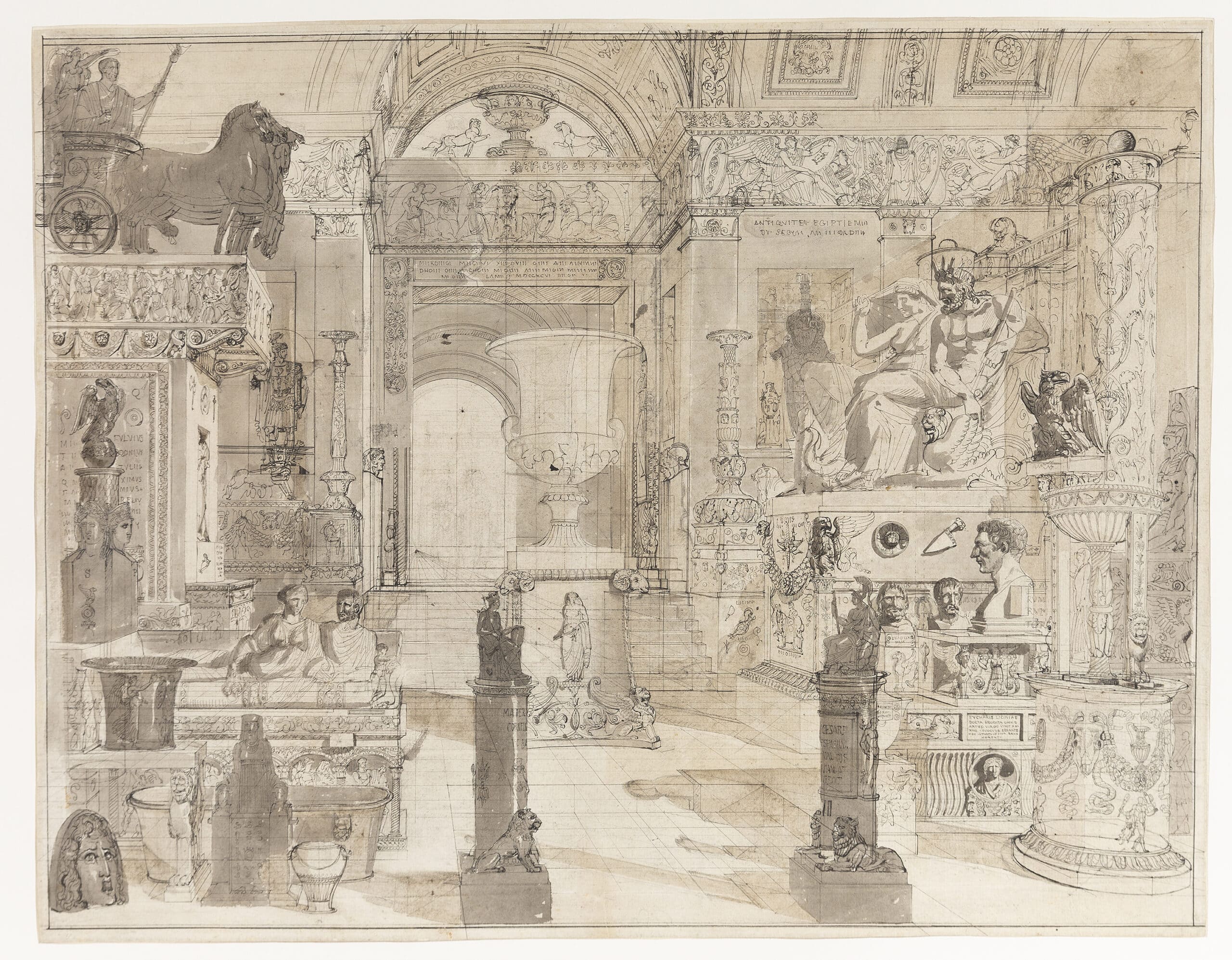Quantum Collecting: A Few Principles and Mechanisms for the Acquisition of Architectural Drawings
– Niall Hobhouse and Matt Page

Drawing Matter is often asked to contribute to discussions, initiated by public institutions with significant collections of architectural drawings, about what—and what not—to collect. For ourselves, this feels the wrong way round, not least because we have no public mandate and have always resisted formulating (still less, publishing) any sort of acquisitions policy.
In the talk I gave in Lucerne last year I found myself confronting this contradiction as I spoke about the relevance of specific additions to the collections here. There is always some unease in ever presenting the collection as a coherent whole, knowing that individual drawings or blocks of material generally arrive through complex processes, each fraught with contingency. Of course, a formal acquisition policy could perhaps have made the process of collecting more fluent, but I wanted to ask myself now whether it would have contributed more real coherence to the collection that we have formed over the last thirty years.
To explore this, I have tried to draft a policy of this kind, strictly in relation to Drawing Matter’s own collecting interests. What follows is written with the immense luxury of retrospect (call it cheating?), to which I would add a passing observation that the many qualifying notes that follow are far more extensive than the definition of drawing itself: An artefact in any medium (to include text, collage, and models) that can be seen to have immediate agency in the articulation of an architectural idea.
In this context, architectural encompasses all spatial events generated by intentional human intervention to include aspects of landscape and urban design, theatre, and performance. And agency is best defined through examining how the objects fulfil their intended function in the design process. In practice, it is the designer’s own thinking that is most rewarding here: often iterative and uncertain, sometimes bombastic, but always speculative and more rarely evidenced in presentation or construction drawings.
A version of this text was first presented by Niall Hobhouse at the 2021 edition of the Lucerne Talks, the biennial Symposium on Pedagogy in Architecture at HSLU’s School of Engineering and Architecture in Lucerne. This expanded version by Niall Hobhouse and Matt Page is excerpted from Drawing in Architecture Education and Research, edited by Heike Biechteler, Dieter Dietz, Johannes Käferstein and Jonathan Sergison. Purchase a copy of the book here.
